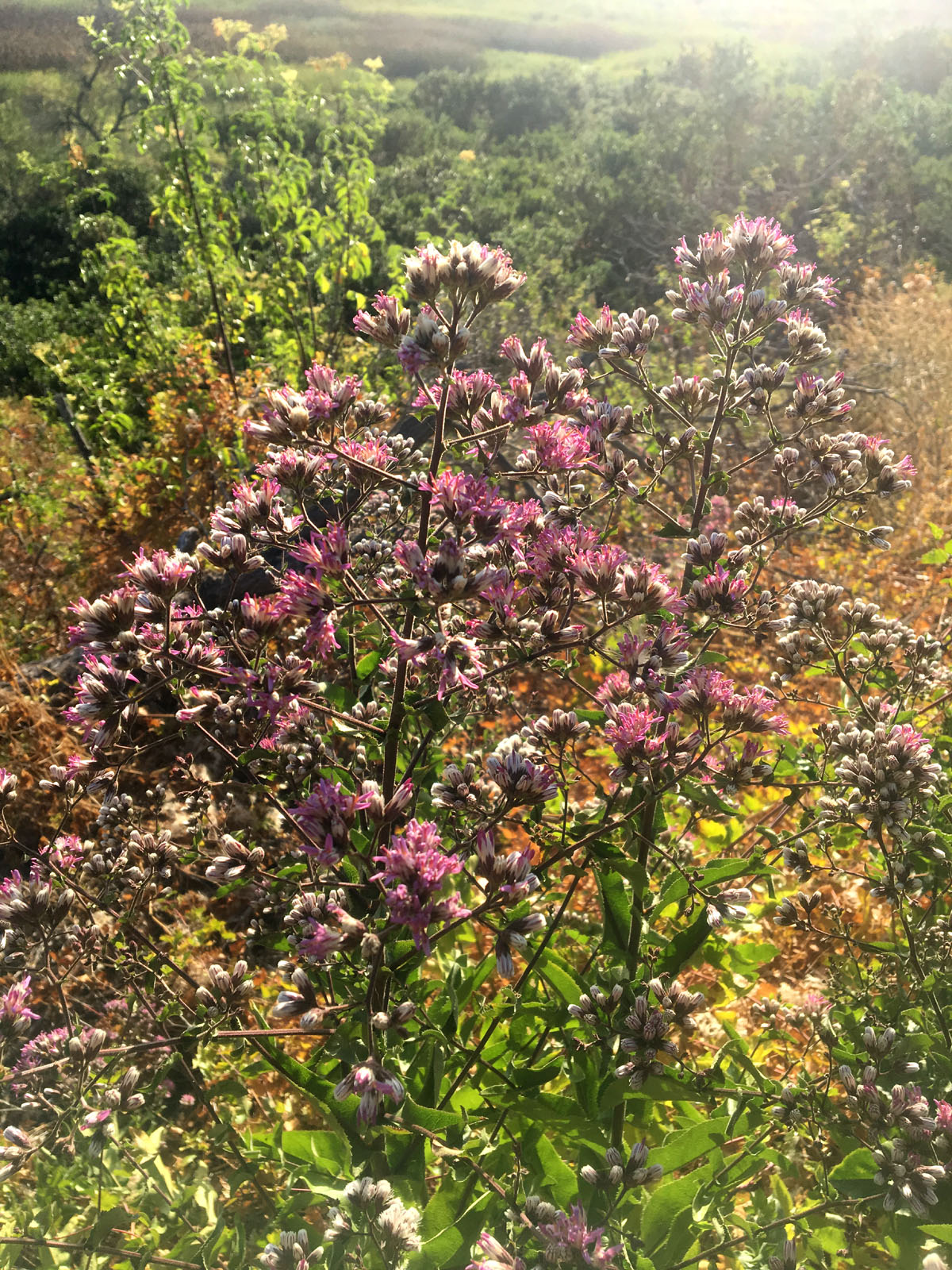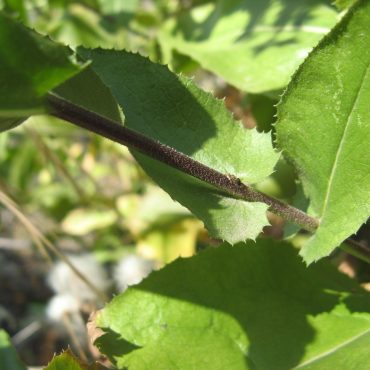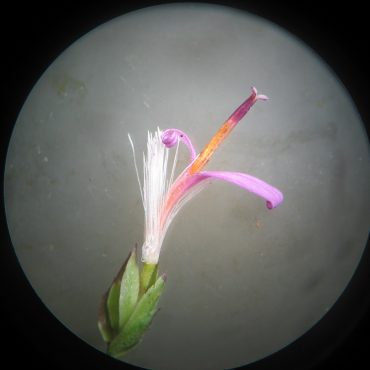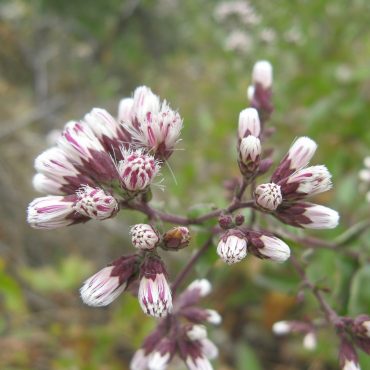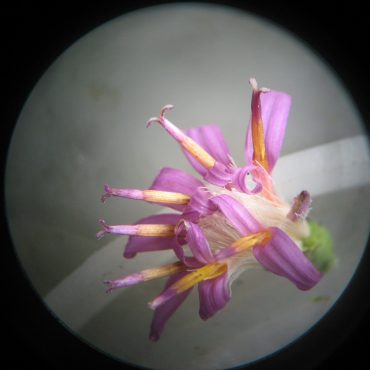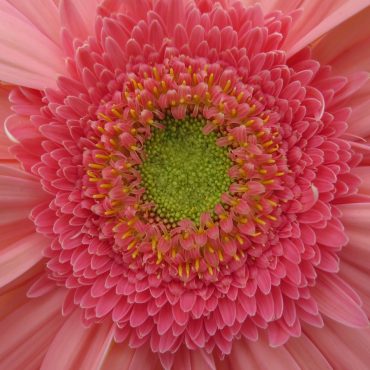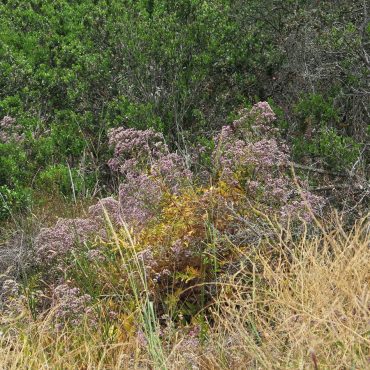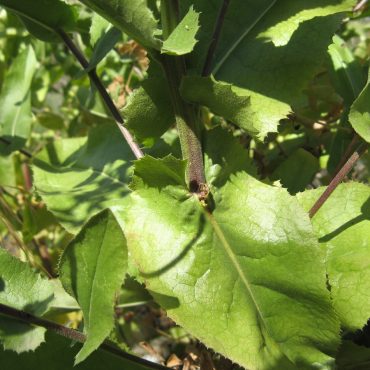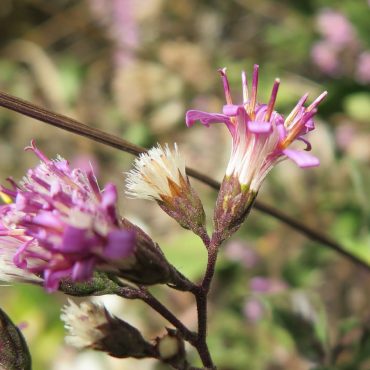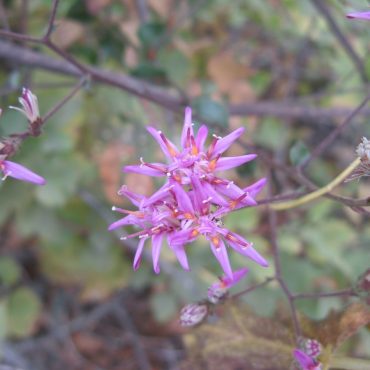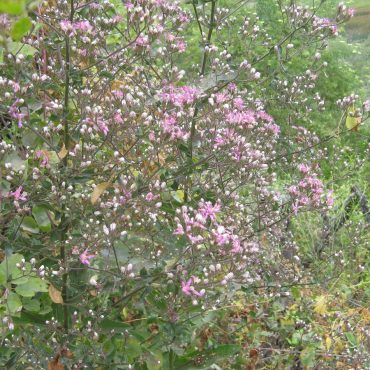Sacapellote is an upright perennial herb with multiple stems up to five feet (160 cm) in height. The leaves are broadly oval with fine-toothed margins and a short point at the tip. They are alternate and sessile, clasping the stem with rounded lobes. The midvein is prominent on the lower leaf surface. Leaves toward the bottom of the plant are eight inches (20 cm) or more in length, decreasing in size toward branch ends to about one inch (2.5 cm). Most of the plant is covered with short, glandular hairs; these give it a slightly sticky texture. Leaves turn yellow as the plant goes dormant in late summer.
Flower heads are generally less than 5/8 inch (1.5 cm) and consist of twenty or fewer two-lipped florets; one hundred or more flower heads are arranged in large domed or flat-topped, multi-branched arrays at the branch ends. The involucre is surrounded by 15-18 brown/maroon-tipped green phyllaries in four to five series. The pappus consists of many whitish bristles, 3/16 inch (5-mm) long. These are prominent even in the bud stage where, together with the pink developing petals, they give the bud a candy-striped appearance. The florets are neither disk florets nor ray florets, but “bilabiate florets.” Petals are bright to pale pink, occasionally white, coalesced into a two-lipped corolla; the larger three-lobed lip curves outward; the narrower inner lip is two-lobed, and often more strongly curved or coiled inward. There are five stamens, the anthers of which are loosely fused into a column around the style. Stamens are yellow or orange, becoming reddish on the outer portions of the anthers. The pistil has an inferior ovary that produces a single seed and a two-branched style exerted beyond the anther column; the style branches coil outward at maturity. The major bloom time is between May and August.1
The seed is a tiny ribbed cylinder, less than 3/16 inch (4.5 mm) long with a tawny pappus less than 3/8 inch (1 cm) long that parachutes the seed through the air.

